Binatone Carrera C350 Sat-Nav Review
Binatone Carrera C350 Sat-Nav
It isn't big or clever, but it does work and it is cheap.
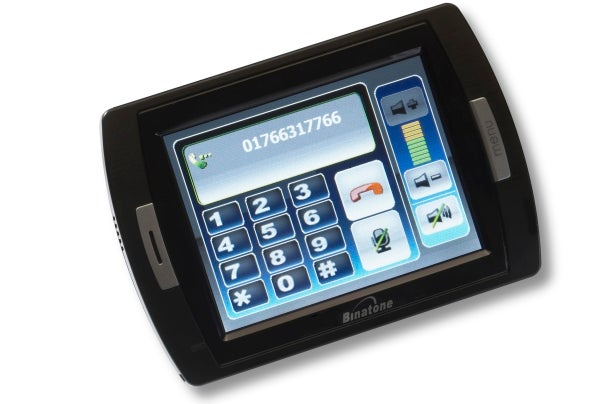
Verdict
Key Specifications
- Review Price: £107.00
When Mio was acquired by Navman earlier this year, a massive hole was left in the sat-nav market. Mio had been leading the pack in terms of innovation and the last Mio product I reviewed – its C620T – was the most impressive TomTom rival I’d come across.
Since the acquisition, however, I’ve been getting Mio withdrawal symptoms with Navman/Mio products yet to materialize. I needn’t have worried, however, as Mio’s old mapping engine – from Nav ‘N’ Go – is now being used by Binatone Carrera in its latest range of navigation products including this budget model, the C350.
It hasn’t done very much to the design of the interface, though: turn it on and the C350 looks just like one of the old budget Mio devices, with only a few branded Binatone tweaks. But while the Nav ‘N’ Go interface conjures up a certain sense of nostalgia – it was the interface on my very first car sat-nav device – it isn’t perfect.
For starters it has a huge information bar running down the left hand side of the screen that cannot be removed. This features various status windows showing information such as speed, ETA and journey time and has a bulbous next-turning indicator at the top and a menu button at the bottom.
It’s a far from ideal use of space – giving a quarter of the screen over permanently to the info bar still seriously cramps the style of a small 320 x 240 pixel, 3.5in TFT such as the one on the C350. Moreover, the interface that lies behind this awkward screen layout is still a little unintuitive and confusing.
You have to delve, for instance, down several menus deep to alter the volume level because there’s no hardware volume control. The POI system is confusingly split into two parts (the bit that you use to switch icons on the screen on and off, and the bit you use to find nearby POIs) and when entering address information you have to first click a button labelled ‘Other City’ before being able to enter a postcode. Weird.
The C350 does, at least, offer full seven-digit postcode recognition and, once you’re driving, Mio’s old mapping engine does a good job of directing you to your destination. I’ve always liked its auto zoom feature, and still do: as you approach a turning, the point of view zooms right up and out, showing the junction from an overhead perspective, complete with animated arrows indicating the direction of travel. Other sat-navs do this, but none have ever done it as well as the Mio sat-navs did.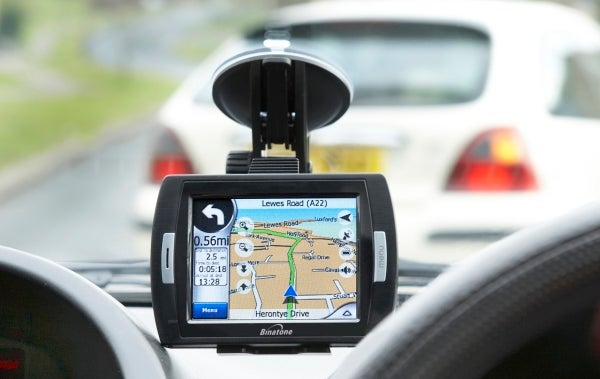
Adding waypoints to routes is simple enough, too, the map browsing mode responsive and there are some nice extra touches: click the power button on the top right and the C350 brings up the route info; click it again and text details of your route appear. A menu button on the front takes you quickly back to the device’s root menu, where phone calls can be made and Bluetooth settings managed.
Elsewhere it works as well as previous budget Mio devices did: route choices seem largely sensible, long complicated routes are calculated swiftly and routes recalculated without delay when you stray off route. 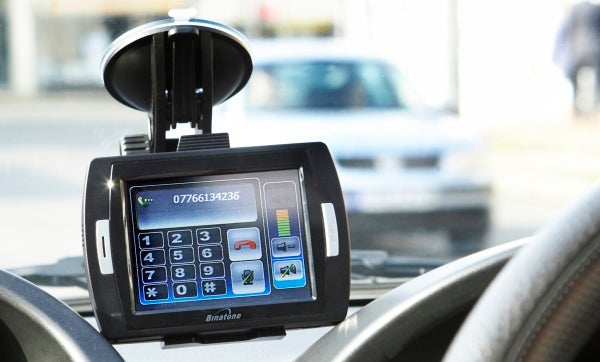
It also acquires satellites swiftly and holds onto them no matter what. There are some surprising inclusions for a budget sat-nav, too. Just as the £100 Navigon 2100 did last week, the Binatone Carrera C350 combines UK and Ireland maps with Bluetooth hands free capabilities and preinstalled speed camera warnings.
But the C350 is not without its irritations. First, the maps don’t seem quite as up to date as they could be. On two separate occasions during my test route from south west to north east London, I was asked to perform turnings that would have contravened traffic regulations, and while driving past the southern end of Westminster Bridge, the C350 still had the old roundabout layout in its database – following its instructions would have led to me driving directly against traffic coming the opposite way.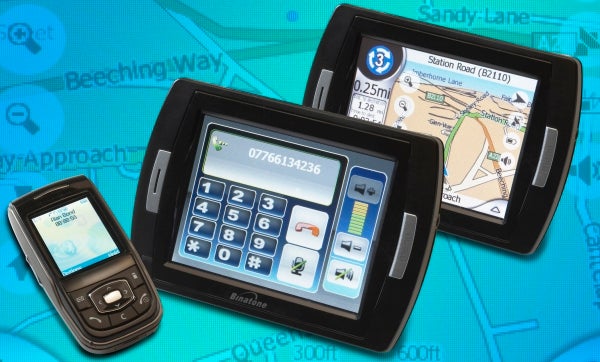
In addition, the speaker and tones begin to grate on the nerves after a while. When speed cameras approach, the C350 blips continuously, even if you’re not speeding, and if you are over the limit it emits a noise that sounds like a cat choking on its kibbles. What’s more, it does this for speed cameras on both sides of the road – it doesn’t discriminate. Voice instructions are abrupt, not entirely smoothly delivered and can’t be changed and the tones to catch your attention before a voice instruction also rather annoying, but at least these can be turned off.
The main problem with the C350, however, isn’t that it won’t get you from A to B effectively – Mio’s products have proved themselves to be perfectly capable navigation devices in the past, and this Binatone version is no different. It’s just that sat-navs have moved on and the C350 is now beginning to look distinctly long in the tooth and it feels a little cheap as a result. 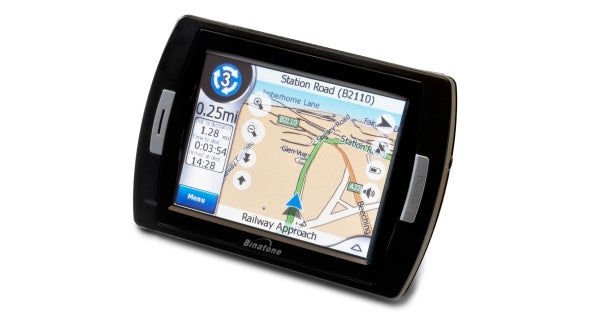
It wouldn’t matter so much if the price was low as a result, but it isn’t: the C350 is £7 more expensive than the Navigon 2100 I reviewed last week, and doesn’t really do anything to justify the extra cost. I can’t say you’ll be completely disappointed if you buy one – it’s a good, solid navigator – but if you do you won’t be making the most of your money.
”’Verdict”’
A solid navigator the Binatone Carrera C350 looks and feels a little bit dated. It’ll get you from A to B well enough, but the likes of Navigon 2100 will do it with more style and for less money.
Trusted Score
Score in detail
-
Value 6

